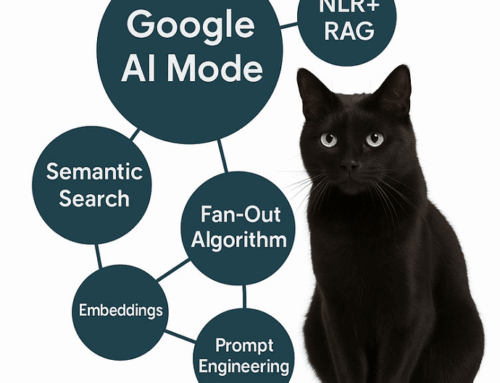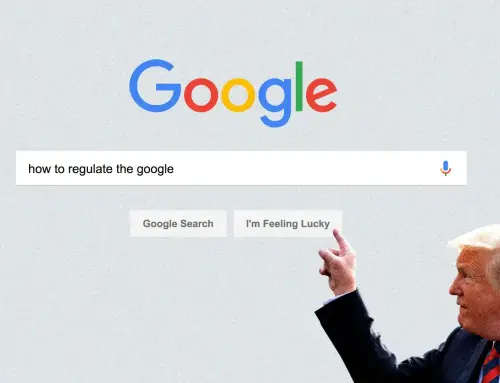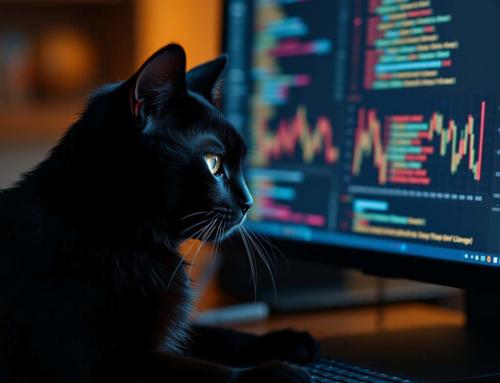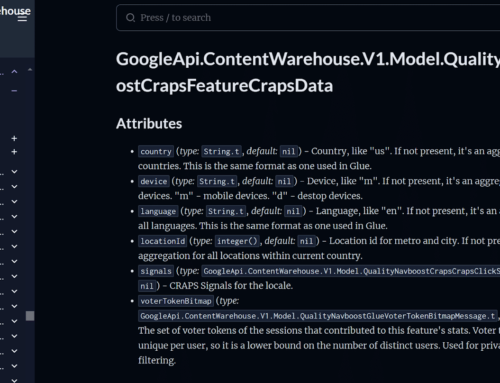You were there once: the first day of school in a new shirt. A shirt that made you proud but which your mother fired as being suitable for a wandering or sick rockstar. You wore it anyway. You took that risk. And when you received the assent of the head of a respected cool child in a crowded hallway, your mother’s hatred evaporated. Confidence restored.
In this case, two people you liked delivered a message. The first was your mother – we love her of course, but she is disconnected from the culture of colleges and would never have won this debate. His advice remained a questionable question.
What makes the difference?
The power of influence.
Influence marketing: a new school term for an old-school concept
Influence marketing is a hot topic at the moment, from the centre of the marketing industry to its most remote limits. But like many fashionable words and fashionable ideas, influence marketing, such as content marketing, semantic research and millennial pink, is more mentioned than understood.
What is influence marketing?
Influence marketing is basically the classic support of celebrities, but placed in a contemporary content-based marketing campaign.
We don’t need to define the word “marketing,” but the concept of “influencer” may, at first, seem more nebulous and new. In short, influencers are people with refined personal brands, who cater to an enthusiastic and trusted audience. They may be traditional celebrities or relatively ordinary people who have managed to attract many followers on social networks.
Influence marketing is therefore about identifying, researching and engaging influencers who create high-impact conversations about your brand with your current and potential customers.
We know the purpose of marketing and we know that the return on investment of any marketing initiative is measured by the action of the target audience, whether it is a business initiative, a sale, participation in an event or e-mail registration. Even if an influence marketing strategy does not escape this end goal, the difference lies in the starting point.
The relationship between influence and influence
A good influencer has deliberately built and positioned his personal brand to trust his market audience. Where most marketing strategies need to spend time attracting attention, an influencer maintains this level of respect and awareness to his audience through regular digital engagement, providing regular real interactions within his area of expertise.
Influence marketing offers the opportunity to unify marketing, public relations, digital marketing and social media through powerful and relevant relationship-based communication.
Are your influence marketing campaigns profitable? Have you achieved your goals? While working with influencers seems exciting, it doesn’t mean anything without results.
What makes an influencer an influencer?
Perhaps for you, the mention of influencer immediately evokes images of reality stars and fitness teas. Perhaps there are images of millennials and their artisanal espresso, selfies and skin care, shoes and satin.
But influence marketing is more than tastes and retweets. It’s more than a cult game of following numbers and accompaniment. The true power of an influencer is twofold: trust and credibility.
Like the classic celebrity you imagine you know – the ones you imagine is your friend, the one you believe in and trust – the influencer has built a foundation of truth between them and their specific audience. This is not something that can be easily translated into traditional advertising tactics. The influencer is not the sell-out; he is the friend you would like to have, the one who sells you something because he believes in it.
It’s not just the number of subscribers
A great misconception about influencers is that they are still people who follow a lot of exponentially expanding social media. Being an influencer is more than a popularity contest.
Consider that the followers are not the same. The masses may look at every move of a celebrity, but that doesn’t mean they trust or love or respect that person. A subscriber account barely ensures that anyone listens. Review your own social media accounts and count the number of people you follow and never rate, which you would never consider for product and service recommendations.
These are the right followers
If the followers of an allegedly influential are not the public that your brand should make themselves known, then their number is debatable, regardless of the number of products they produce. An influencer is a person who has the power to truly change the perception of others.
Don’t confuse fame with influence
This distinction – followers versus true fans, awareness of respect – is the difference between celebrity support and influence marketing.
In the marketing sector, the celebrity sponsorship model pays to attach to this celebrity name. In doing so, a wider net is thrown without much control over who it will touch. The guarantee is to reach many people, whether or not they are your target.
At the same time, influence marketing revolves around a specialist with a smaller circle of trust and organic word-of-mouth, based on honest and authentic experiences.
With the support of celebrities, the prize is on fame. With influencers, it’s about the relationship.
How does an influencer manage to influence?
In most cases, an influencer wields power within specific networks and communities. They have a social weight in their communities, often acquired through strategic and intentional behavior, designed to build a foundation.
But it’s not something that happens overnight. The ascent from one user to another is an ascent and an update. The title “influencer” includes many archetypes, each with its own specialties.
LinkedIn’s VIP
He is usually a powerful LinkedIn user whose trajectory has earned them praise. They offer business information via LinkedIn updates – a.k.a. “Broetry” – and career-oriented content. People in their field take note and some act, with comments, and vouch for them, disagree, support, eventually they get involved. Soon, this information on LinkedIn turns into TED discussions and the name of the LinkedIn VIP in an industry-specific conference brochure. could attract more attendees than the free lunch. Nowadays, we are more used to the viral influencer. Those who have reached this level of social influence revered through a one-time incident.
The YouTube Star
Even YouTube stars had to build their platform and build trust. Think of Karina Garcia, affectionately known as “the queen of mud”, who enjoyed success almost overnight with her YouTube videos of tutorials and DIY experiences on mud. Since then, Karina has received more than 860 million views on her channel and has continued to attract more than 6 million fans. Its creative credibility and reach among slime fanatics have led to partnerships with well-known brands such as Disney and Coca-Cola. She even announced her own slime kit for Target, proving that influencers are themselves a brand, no matter how they got on the scene.
The Instagram model
Often a fashionista with cool clothes and a unique look. Note, of course, that in today’s world, people are more likely to trust the model that is distinct and authentic, rather than a person who seems too perfect to be real. In most cases, an Instagram celebrity is a person who has his own style and his own cultivated brand. They know the best hashtags to connect with their community and develop their audience on a daily basis.
The Snapchatter candidate
Like the Instagram model mentioned above, many Snapchat influencers are known to be outspoken and real. They gain influence by being ordinary, rather than positioning themselves as celebrities.
Twitter’s troll
Someone to stay away, in most cases. Twitter is a great example of followers versus fans in action. Many interactions on Twitter are fueled by rage and politics, with outrage pushing people throughout their day.
Regardless of their particular ascent and the social media platform or platforms of their choice, an influencer is a person who has scope, credibility and a certain ability to sell both his personal brand and the brands with they work.
Of course, the question is not how to become an influencer. Or, if so, you’re in the wrong place.
The real question is: how can your brand find the right influencer?
How can we find an influencer for our influence marketing campaign?
One decision you need to make is to use a tool or find an influencer yourself. While there are many tools and services designed to help you spot influencers, it is likely that your own organic search will have more impact and reliable results.
Here’s a look at the search for the right influencer:
- Create a spreadsheet to track the scope of your influence, with columns that include: a) a social media platform b) a niche c) the number of followers d) a typical commitment e) contact information
- Look for influencers already familiar with your brand. The best scenario is that of someone who already loves your brand or who could easily find an attraction there.
- Make an effort not to reach out to influencers who have already worked with competitors, as this will probably waste your time and theirs.
- Contact them via DM or email to assess their interest. Start the conversation with a final phase of negotiating a partnership. From there, of course, it is important to have a method to measure success and effectiveness.
How do we judge influence marketing?
Are your influence marketing campaigns profitable? Have you achieved your goals? While working with influencers seems exciting and sexy, it doesn’t mean anything without results.
Some ways to measure your influence marketing:
Based on your own experience with analytics platforms and tracking tools, you may need the help of an analyst or a SEO enthusiast. In short, you need to assign specific settings to URLs shared by all your influencers to track the attribution and actions of visitors resulting from influencers.
Promo code
Giving unique promo codes to influencers is a great way to track attribution. Each time a customer uses the code provided by a specific influencer, you can directly and accurately attribute the revenue to its origin.
- Hashtags
Create a hashtag specific to an influencer and suggest that they introduce it to social media. From there, you can follow the progress of the hashtag with its followers. Even if you can’t correlate it specifically with sales, you can see your influence spreading in the waters of social media.
Of course, following your influence marketing is perfectly acceptable. What matters is that you establish some kind of key performance indicator, because any good marketing campaign requires an indicator to be judged.
Remember that the cornerstone of influence is trust
Brands like marketing through influence have a reason: it’s effective. However, like any type of marketing, it is only effective if it is done right. There are no quick gains, no promises and no guarantees.
If you want to succeed with an influence campaign, take the time to get it right. Find influencers who have real follow-up, people who have a sincere audience and who care about what they say. Partner with relevant influencers.
Keep in mind that influencers want you to collaborate with them, but only if it benefits everyone involved: the brand, the influencer and the influencers. Think back to the story of wearing the shirt to school. You want to be that shirt. Your mission now is to find the cool kid who wants to wear it.

































Leave A Comment